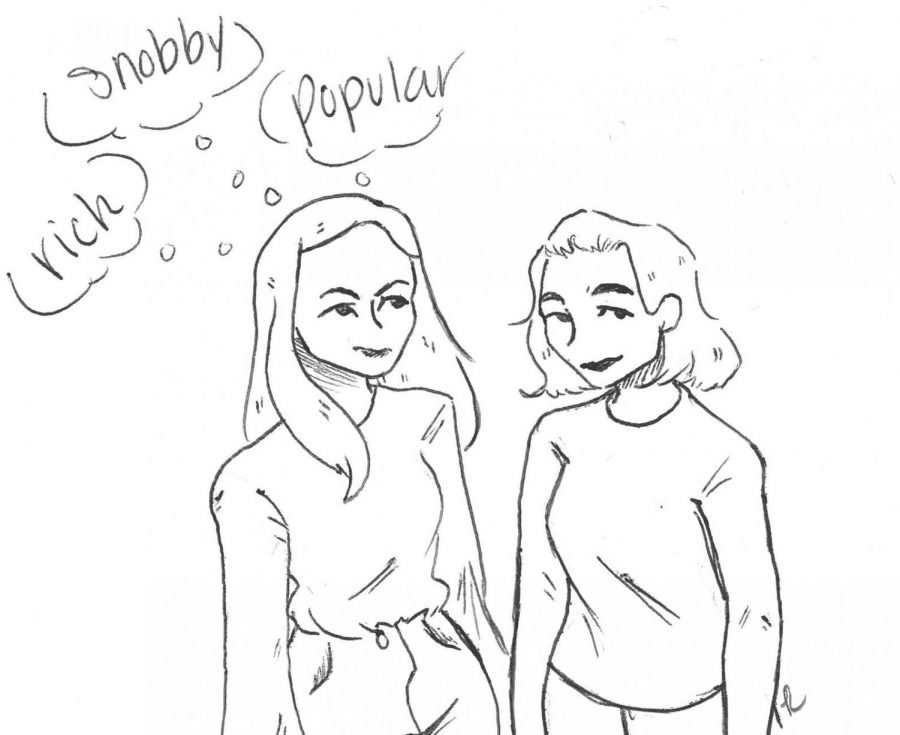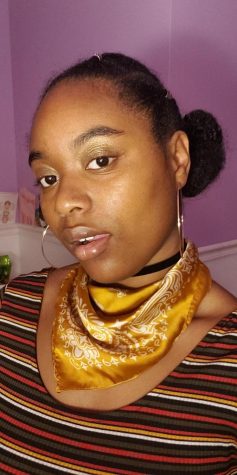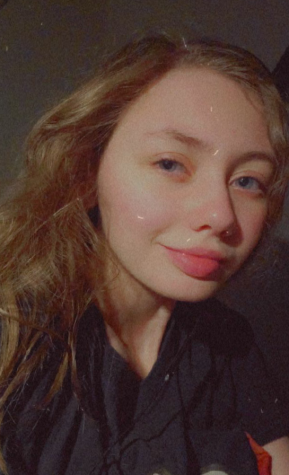Stereotypes negatively affect students
Stereotypes shown in movies proven false, still affecting students
November 13, 2019
The Breakfast Club is an iconic movie about four students on complete opposites of the social spectrum being forced to spend a Saturday afternoon together in detention. At first, they are all mortal enemies, focused on getting through the day so they can go along about their business. By the end of the movie, however, they have become friends and hold a mutual respect.
The classic troop of a jock, nerd, weirdo, and popular girl having to come together was the classic for movies in the early 1980’s and has integrated itself into teenage American tradition.
“Coming to high school, I always thought how high school movies were is how high school is and I think that other people have that same mindset,” Marissa Michel, senior, said
Stereotyping is used by everyone, every day, according to PsychologyToday.com. This is because humans do what is called “automatic or implicit stereotyping”. When someone stereotypes someone else, normally, it is not with negative intent but a natural reaction. Many factors can influence how society member chooses to categorize each other.
“If you have one rich person and one poor person, the rich person is going to stereotype people who do not have as much as they do,” Ryan Daly, senior, said.
Movies such as the “Breakfast Club” and “Mean Girls,” incorporate stereotyping into the main plot, showing the audience the difference between one lunch table cliché to another. Probably the most important influencers are friends.
Senior Javari Johnson is an African American student whose friends are primarily also African American. He says that because of his friend group, most people automatically assume that he is funny and that everyone loves him. He does not find these stereotypes to be offensive, believing that everyone is the same at the end of the day. Johnson tries not to take offense at everything but knows that different people have different experiences.
Mahzarin Banaji, says that “our ability to categorize and evaluate an important part of human intelligence.” However, stereotyping has a way of crossing the line. Racial stereotyping pokes fun at different ethnicities for being different. Minorities such as Native Americans, Hispanics, African Americans, and Asians are degraded by stereotypes even if it is part of their culture or history.
“They [stereotypes] do hurt,” Maya Bown, senior, said. “Before I used to take it really hard. I just let it go now because they just want something to say and I’m not going to let them have that.”
It can be easy to excuse racist comments like all black people use food stamps or all Mexicans are illegal by implying that the remarks are stereotypes meant to be a joke and should be brushed off.
By continuing to degrade minorities, they can begin to turn upon themselves known as “racial phenotypically bias” according to AmericanPsychologicalAssociation.org. In a study of this bias, it was shown that African Americans tended to view more Afrocentric feature such as darker skin, fuller lips, and coarser hair, in a negative light compared to less Afrocentric features.
“If its something based on my color that’s not ok. Now you are disrespecting me, disrespecting my background and where I came from,” Jamaria Thompson, senior, said. “You can’t help how people feel.”
While some stereotypes can be cliché troops that are a form of identifying someone, racial prejudice has a way of hiding behind the stereotypes. Knowing when the line is crossed allows for stereotypes to stay behind the big screen and for racist comments to stay out of mouths. It may be easier to categorize people, but getting to know them enables the ability to create new relationships.
“You can’t make a friendship with a person if they don’t care to know you,” Ryan Kodura, senior, said.





